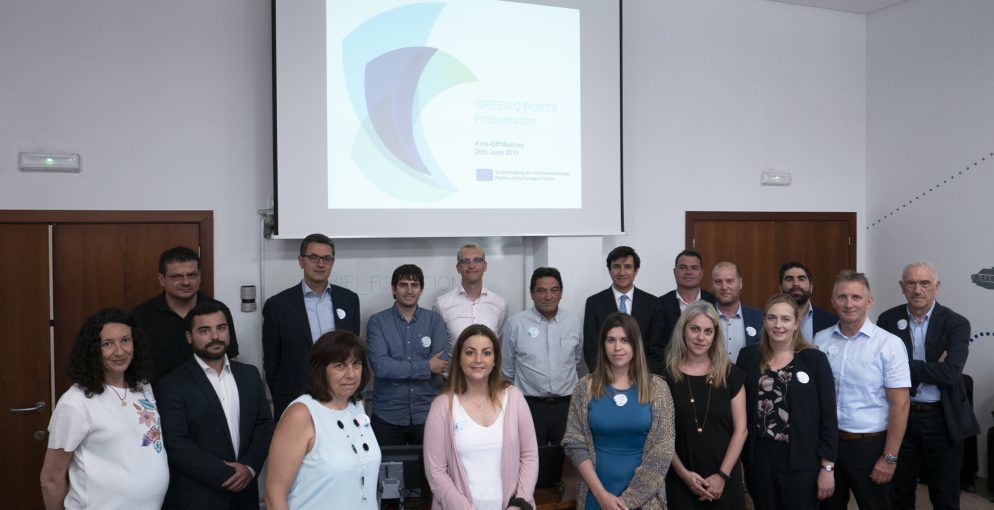Valencia – 10.07.19. Last June the project Green and Connected Ports (GREEN C PORTS) was launched, led by the Fundación Valenciaport and financed by the European Commission’s Connecting Europe Facility Programme (CEF).
The general objective of GREEN C PORTS is to provide a set of digitisation tools and technologies to support the environmental sustainability of ports and the performance of port operations in the TEN-T network.
This project will address six business cases consisting of prototypes and pilot tests that will be implemented in different European ports and will serve as a basis for testing innovative technologies such as IoT, big data or predictive analysis using artificial intelligence models.
The first business case, which will be carried out in the port of Valencia, seeks to integrate different sources of port information in order to reduce road traffic congestion. In this sense, a series of prediction models are planned to determine the date and time of entry and exit of the different trucks that enter the port. In this way, it will be possible to know with some precision whether or not there will be congestion at a certain date and time in the future.
The second business case aims to anticipate the problems of maritime access to the port of Venice, due to certain adverse weather conditions such as tide, wind or fog. The aim is to carry out predictive models to anticipate possible closures of this Italian port, informing the affected ships and customers.
Business cases 3 and 4 aim to improve air quality and noise in both the Greek port of Piraeus and the port of Valencia. To this end, a series of sensors, meteorological cabins, spectrographic cameras and other equipment will be deployed to identify, at an early stage, measurements above certain tolerance levels in order to inform the port authorities so that they can take certain decisions to mitigate these impacts.
The fifth business case will also evaluate, in the German ports of Bremerhaven and Wilhemshaven, the negative impacts of wave agitation, currents and wind on the productivity of ship-to-shore (STS) cranes. Through a predictive model, different sources of information will be integrated in order to anticipate, up to 48 hours in advance, possible drops in the level of service due to weather issues. In this sense, the management and communication of this information would allow the masters of the different ships to be able to adjust their speed during navigation, avoiding calls at those times of the day when adverse conditions are expected.
Finally, the sixth and final business case will allow the measurement of emissions in real time along a complete multimodal transport chain on the routes connecting Barcelona, Valencia and Palma de Mallorca. The pilot test will make it possible to determine exactly what carbon footprint a given piece of equipment has generated, offering the various shippers complete transparency of their transport operations, so that they can opt for those logistics chains with a lower environmental impact for their products.
In short, this project will reduce the impact of port operations on cities, control emissions from ports and ships and optimize cargo handling in major European ports. In this sense, the project will promote green, viable, attractive and efficient maritime transport links, integrated throughout the transport chain, and its implementation will contribute to rebalancing the EU transport system towards a more sustainable system.


